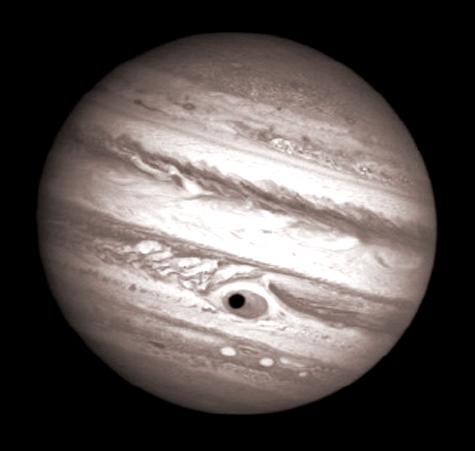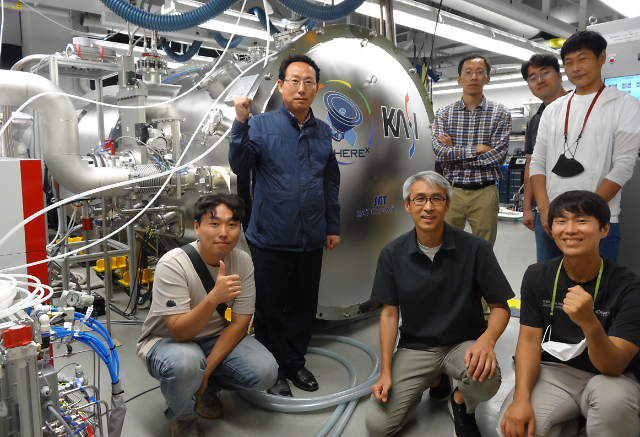
The results, based on a combination of data from the December 2000 Jupiter flyby of NASA's Cassini spacecraft and laboratory experiments, contradicted the other leading theory for the origin of the spot's striking color that the reddish chemicals come from beneath Jupiter's clouds.
In the lab, researchers blasted ammonia and acetylene gases, chemicals known to exist on Jupiter, with ultraviolet light, to simulate the sun's effects on these materials at the extreme heights of clouds in the Great Red Spot.
The simulation produced a reddish material that "nicely matched "a model of the Great Red Spot, in which the red-colored material is confined to the uppermost reaches of the giant cyclone-like feature, the researchers said in a statement released by NASA.
"Our models suggest most of the Great Red Spot is actually pretty bland in color, beneath the upper cloud layer of reddish material," said Kevin Baines, a Cassini team scientist based at NASA's Jet Propulsion Laboratory. "Under the reddish 'sunburn,' the clouds are probably whitish or grayish."
A coloring agent confined to the top of the clouds would be inconsistent with the competing theory, which posits that the spot 's red color is due to upwelling chemicals formed deep beneath the visible cloud layers, he said.
If red material were being transported from below, it should be present at other altitudes as well, which would make the red spot redder, he added.
As for why the intense red color is seen only in the Great Red Spot and a few much smaller spots on the planet, the researchers said altitude plays a key role.
"The Great Red Spot is extremely tall," Baines said. "It reaches much higher altitudes than clouds elsewhere on Jupiter."
By Ruchi Singh




